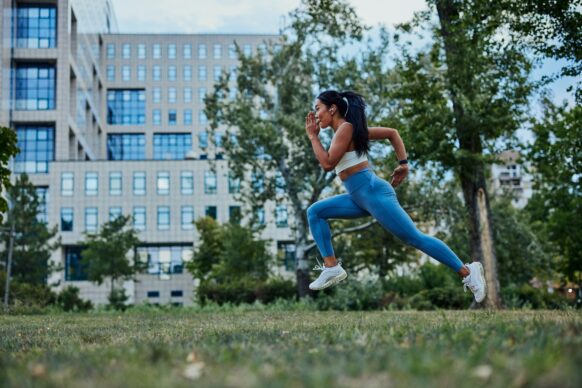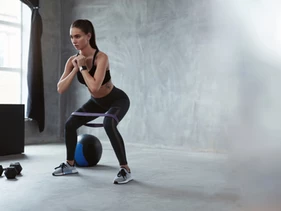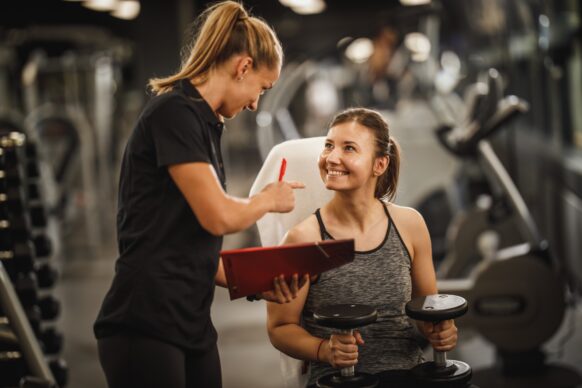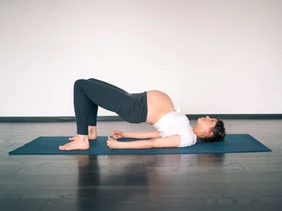by Katie Weisenberger, DPT, CSCS, SCS
It looks as if working from home may be the new normal for a while. So it’s about time you invest in yourself and long-term health by creating a space that allows you to work from home without causing unnecessary aches and pains – because the last thing we need right now is more stress in our lives! Let’s start from the top and work our way down.
1. Screen Height: Our eyes naturally look down at a 45 deg angle, so it’s best to position the top of your screen in line with your eyes so that you will naturally look at the middle of the screen without straining your neck.
2. Arms: Try to position yourself so that your shoulders are relaxed and your elbows can rest at a 90 degree angle.
3. Wrists: Your wrists will be most comfortable if you can rest them in a “neutral position,” meaning not excessively extended up towards the ceiling or flexed down towards the ground. Buying a wrist pad can be helpful to keep your wrists in this neutral position; it can take tension off the structures on the bottom side of your wrist that run through the carpal tunnel.
4. Back: Make sure you’re using a chair with appropriate lumbar support. If your current office chair isn’t sufficient and you can’t get a new one, try placing a rolled towel or small pillow between the small of your back and the back of the chair for additional support.
5. Legs: It’s best to have your hips and knees at 90 degrees while sitting in your chair.
6. Feet: Make sure your feet are supported while you’re sitting in your office chair. If your chair is too high to be able to rest your feet comfortably on the ground, you can place a yoga block or something similar under your feet so they’re supported.
Tip #1: Make sure you’re moving regularly throughout the day. Our bodies crave movement and staying in one position for too long can start to cause pain and stiffness. Try moving into a new position every hour to make sure you’re offering your body a new stimulus throughout the day.
Tip #2: Have you started to notice numbness or tingling in your hands or fingers? Has anyone told you that you have carpal tunnel? Give the following exercises a try and see if you can help address some mobility limitations you may have in your neck and upper body.
Chin Tucks (10-15 reps x 2-3 sec hold)
Stand against a wall and tuck your chin back like you’re making a double chin. Try to avoid tilting your head down or up, just simply push straight back. Try to get your earlobe in line with the tip of your shoulder.
Wall Angels (10-15 reps)
Stand against a wall with your head, upper back and butt touching the wall. Place the back of your hands against the wall and slowly slide them up in a “snow angel” motion. Try to keep your hands in contact with the wall the whole time. If they start to come off, that’s your upper limit and bring them back down.
Ulnar Nerve Glide (10-15 reps)
This exercise is meant to glide your ulnar nerve, which runs from your neck all the way down to your fingers. Bring your arm up to about 90 degrees, then bend your elbow and wrist back towards your face. Hold for just a second, then extend your hand and elbow outwards.
Median Nerve Glide (10-15 reps)
This exercise is meant to glide your median nerve, which runs from your neck all the way down to your fingers. Start with your hand up by your shoulder. Then extend your elbow and wrist back behind you. Hold for a second, then return to the starting position.
Reach out for more exercises to optimize your work-from-home routine!




